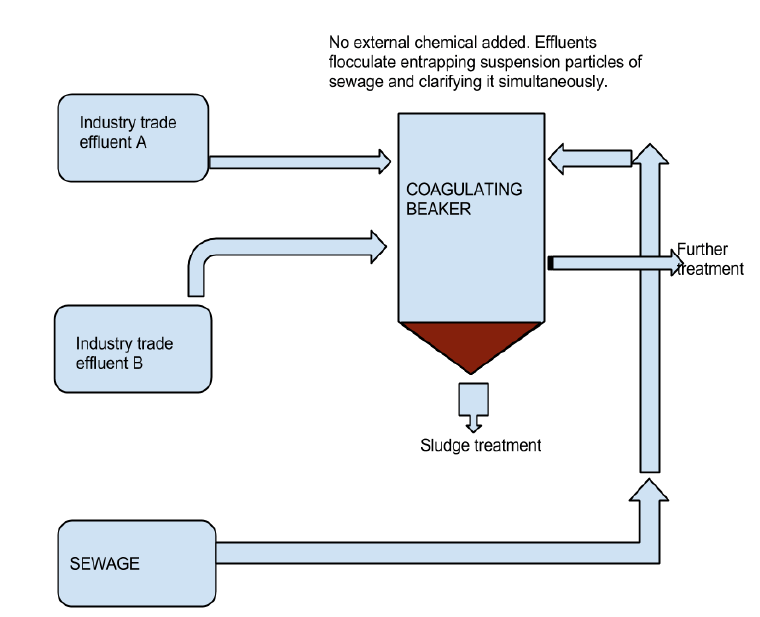Project Name : Treating Sewage with Sewage
Project Theme: Community Health & Environment
Objective/Aim: To obviate the use of externally added chemicals by utilizing the coagulating power of chemically reactive trade effluents in treatment of sewage and effluents.

Scientific Principles Involved:
Coagulation: It is a process which involves destabilization of waste-water particles so that they precipitate out of the sol during the process of chemical flocculation.
Flocculation: It is the process of formation of flocs(or flakes) due to the aggregation of colloidal particles when destabilized.
Coagulating ions: These are the ions which are responsible for neutralization of charge on the colloidal particles +ve ions coagulate -ve sols and vice-versa.
Flocculation value: The minimum concentration of an electrolyte (in millimoles per litre), which is required to cause the coagulation or flocculation of a sol.
Mutual Coagulation: Oppositely charged sols when mixed in almost equal proportions, neutralize each other’s charge and get partially or completely precipitated. This is referred to as “Mutual Coagulation”.
Hardy-Schulze Rule: Greater the charge on the coagulating ion, greater is its power to cause the precipitation of a sol.
Materials Used: Burette, Beakers, Lego NXT Kit, Chemicals (Ferric chloride, chlorine water, Ferrous sulphate), Microscope, Wastewater Samples, Stirrer, Funnels, Pipe Tubing, Laptop(for programming)
Working Investigations/ Findings:
The color of a waste-water sample/mixture depends directly upon the concentration of coagulant added and so can be used as one of the parameters to determine Flocculation Value.
Not only do sand particles get entrapped in the flocs formed, but they also attract these flocs towards themselves as is explained by the downward movement of the floating flocs sometime after the addition of sand particles. Therefore, suspension particles in sewage can expedite the precipitation process by aiding in the formation of larger flocs.
By the process of “Mutual Coagulation” – multiple sewages (oppositely charged sols) can be made to counteract one another, if studied thoroughly.
Proposed Design of Treatment Plants:

Utility and further scope of the project:
1. Effluents/waste-waters from different industries can mutually coagulate one another without the use of externally added toxic chemicals (coagulants/flocculants).
2. As no external chemicals are used to carry out coagulation, sludge (free of chemicals) generated from such a system can be put to use as manures in farms.
3. Since sewage and effluents can mutually counteract one another, their treatment processes can be clubbed together in a single unit. Thus, instead of two different plants (STPs an ETPs), there can be just one integrated plant.
4. A huge amount of power and money can be saved if the inefficient biological process is shunned and replaced with a unified treatment plant which makes use of sewage to treat nothing else but sewage.
Name of the School: Delhi Public School, R.K. Puram, New Delhi.
